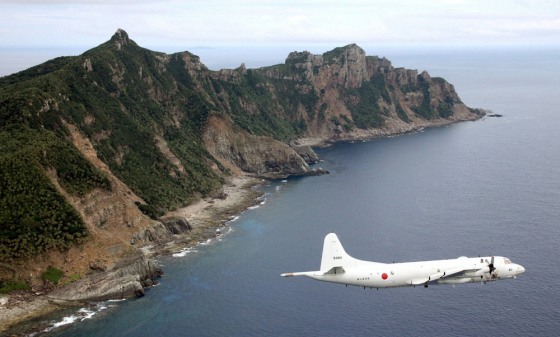China’s efforts to claim airspace over a disputed chain of islands, also claimed by Japan, drew a sharp rebuke from top U.S. officials.
Even as the United States grapples with Iran’s nuclear weapons program and the conflict in Syria, the flare-up in the East China Sea, quickly condemned by the White House, Secretary of State John Kerry and Defense Secretary Chuck Hagel, demonstrates how China flexing its growing military muscle is a continuing headache for the Obama administration.
China’s Defense Ministry issued a map Saturday of an “East China Sea Air Defense Identification Zone” that included the disputed islands, known as Diaoyu in Chinese and Senkaku in Japanese. The map came with a warning that any aircraft flying through the zone must identify itself to Chinese authorities and obey all orders at the risk of “emergency military measures,” the Associated Press reported.
The new zone overlaps with much of Japan’s zone, including the disputed islands. Although they are small land masses, they are part of a proxy fight in a larger power struggle between China and Japan.
The White House called the move "unnecessarily inflammatory" on Monday.
"There are regional disputes in that part of the world and those are disputes that should be resolved diplomatically," White House spokesman Josh Earnest told reporters traveling with President Barack Obama.
"And there should be, in this case, plenty of overlapping common ground to reach a resolution that doesn't involve inflammatory, escalating rhetoric or policy pronouncements by any side, and that's how we hope this situation will be resolved," he added.
“This unilateral action constitutes an attempt to change the status quo in the East China Sea,” Kerry said in a statement, released just hours after he entered a meeting with his foreign counterparts in Geneva, Switzerland to hash out the Iranian nuclear deal.
“Escalatory action will only increase tensions in the region and create risks of an incident,” Kerry added.
While many countries have Air Defense Identification Zones, it is uncommon for a country to interfere with aircraft that is not intending to enter its national airspace, Kerry noted in the statement, calling China’s announcement to do so a “threat.”
Hagel said that the U.S. was “deeply concerned” with the development. “This unilateral action increases the risk of misunderstanding and miscalculations,” Hagel added.
The United States has a lot on its foreign policy plate right now, but that doesn’t mean it was caught off-guard by this announcement, China expert Bonnie Glaser of the Center for Strategic and International Studies said.
“It is a pile on, but I suppose we could just say that it’s not completely new,” Glaser said. She noted that the conflict tends to “flare up at various moments” because one country or the other makes an aggressive move. For example, China has flown unmanned drones over the islands, which Japan has threatened to shoot down.
Glaser added that with their response, the U.S. wanted to “ensure that China does not miscalculate and think that it can act in an aggressive way in the airspace over the disputed islands and not have the United States respond.”
A U.S. Department of Defense spokesman said on Monday that U.S. military planes would not identify themselves according to the new rules.
"That was not a requirement last week," said Col. Steve Warren, a Pentagon spokesman. "American forces could just fly through there without having to do any of those things. We will continue not doing those things."
More troublesome, however, is the risk of Chinese and Japanese pilots crashing in the parts of the zone claimed by both countries, Glaser said. “There’s just many ways in which this could go badly.”
Reuters contributed to this report.
Related
